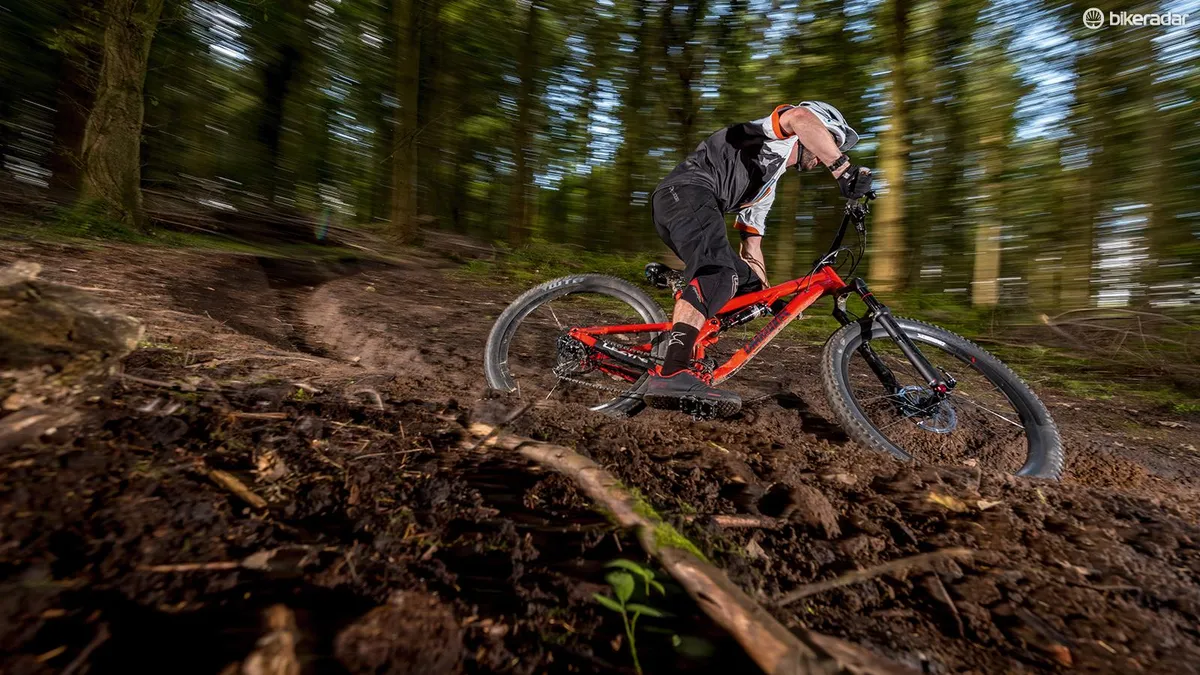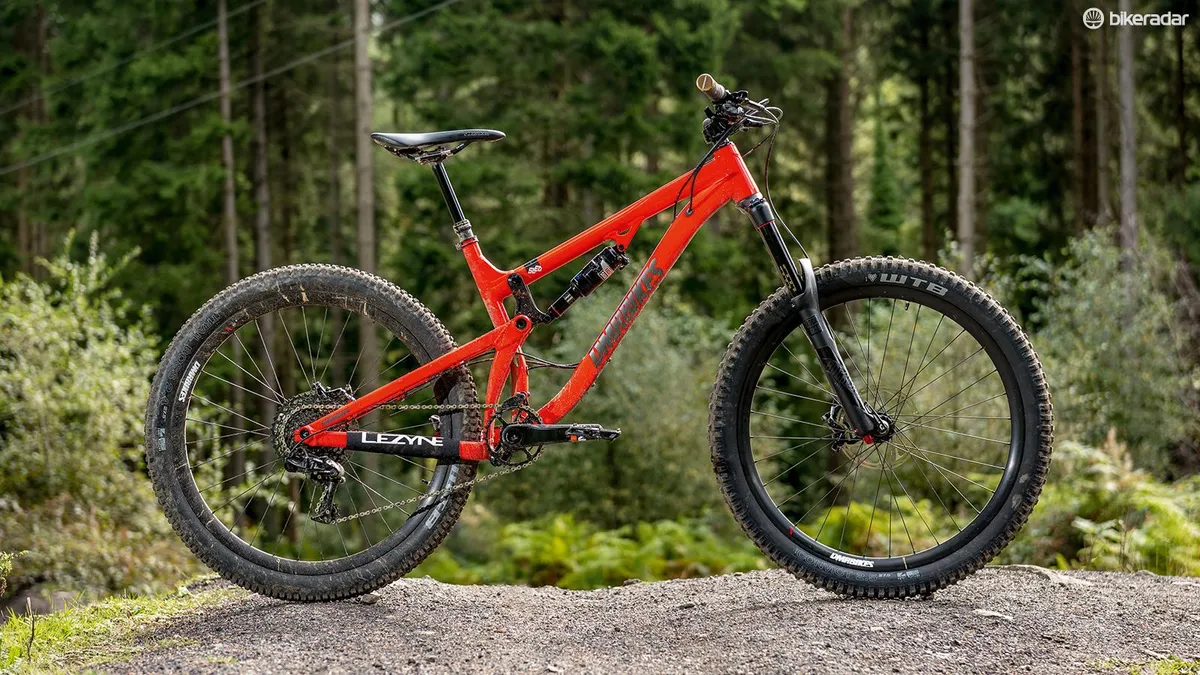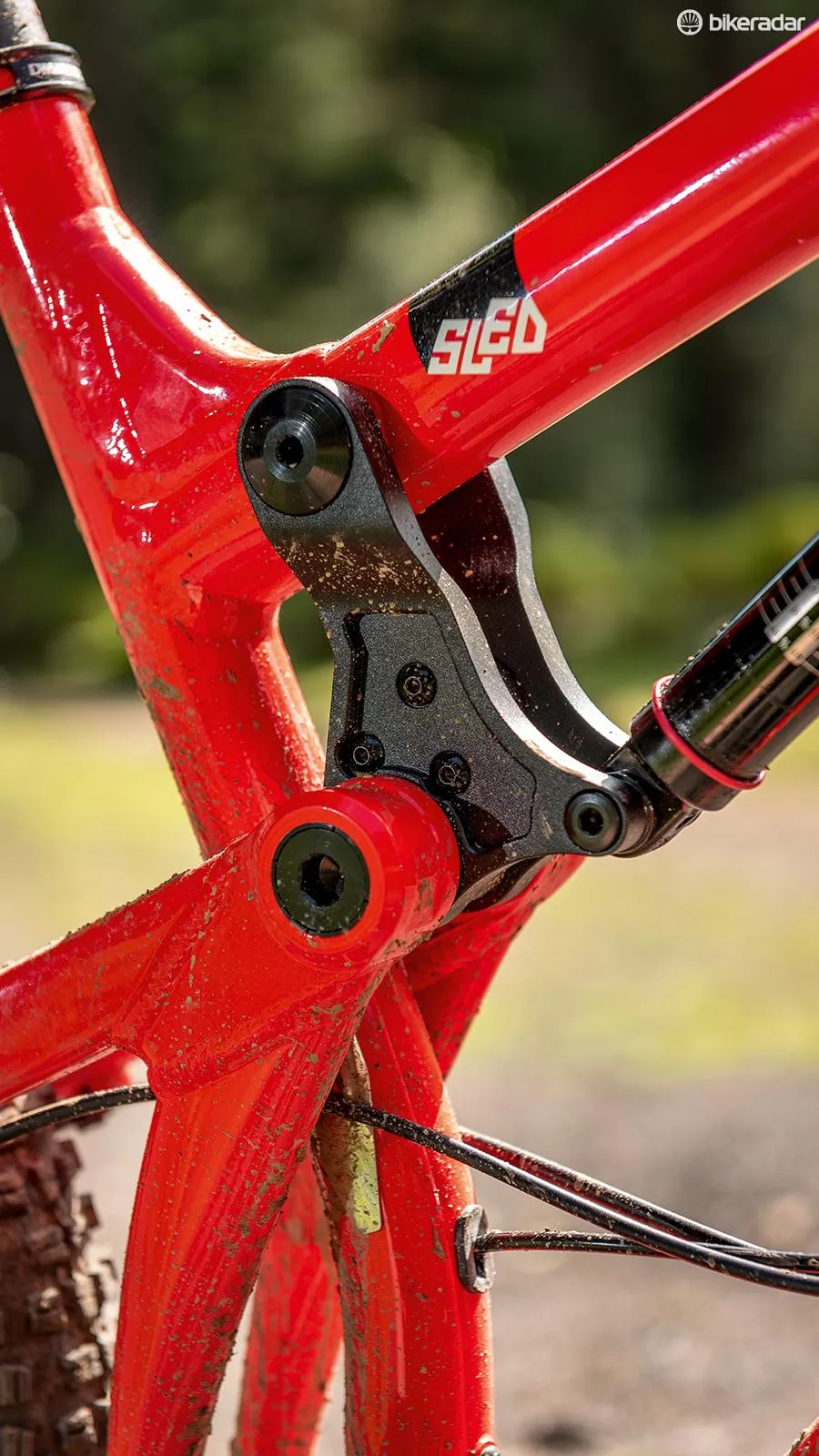While DMR is better known for all things dirt-jump related, it knows a thing or two about well-considered bike and product design. The Sled, which is its second full-suspension bike, but the first made from aluminium, is proof of this.
DMR Sled specifications
- Frame: 6061 aluminium, 160mm (6.3in) travel
- Fork: RockShox Pike RCT3, 160mm (6.3in) travel
- Shock: RockShox Monarch RT3
- Drivetrain: SRAM GX w/ DMR Axe M30 cranks and Praxis Works chain guide (1x11)
- Wheelset: DMR Zone 275 Boost wheels
- Tyres: WTB Convict Light/High Grip 27.5x2.5in (f) and WTB Trail Boss Light/Fast Rolling 27.5x2.4in (r)
- Brakes: SRAM Guide R, 180mm rotors
- Bar: DMR Wingbar Mk3, 800mm
- Stem: DMR Defy 35+, 35mm
- Seatpost: X-Fusion Manic 125mm dropper
- Saddle: DMR Stage1
- Weight: 14.8kg (32.65lb), medium size without pedals
DMR Sled frame and kit
The Sled’s 160mm of travel is delivered via DMR’s ‘Orbit Link’ suspension system, which uses a pair of counter-rotating links to connect the swingarm to the mainframe.
What sets this apart from many other ‘virtual pivot point’ systems is that the lower link rotates around the Sled’s bottom bracket. Controlling all that travel is a RockShox Monarch RT3 shock, with a three-position lever that lets you lock it out for long climbs.
An upper chain guide from Praxis Works is attached to the lower link and rotates around the chainring as the Sled moves through its travel.
Other notable frame details include a threaded bottom bracket, collet-style pivot hardware and 148mm rear-axle spacing. There’s room for a 2.4in tyre in the rear triangle.
The bar, stem, cranks and saddle all come from DMR and are great bits of kit
Cables are routed internally through the front triangle and loop out around the head tube – so you may find your knees clipping them when climbing out of the saddle.
The bar, stem, cranks and saddle all come from DMR and are great bits of kit. I did swap the slide-on DMR Sect grips for non-mushroom lock-on alternatives though.
X-Fusion supply the dropper post, which comes with a neat, easy-to-reach remote. While I had no issues dropping the post, it occasionally needed assistance to return to full extension. I appreciated the massive 2.5in WTB Convict front tyre in their ‘High Grip’ compound, when tackling rough terrain.
DMR Sled ride impressions
Considering its 14.8kg weight, the Sled pedals well, thanks to the way the Orbit Link suspension works. In fact, I never once felt the need to reach for the shock’s lockout lever when climbing.
Get gravity behind the Sled and it’s almost impossible not to have a huge grin on your face.

Though it feels reassuringly solid, it’s still agile and lively when it counts, and eager to make the most out of every take-off or trail obstacle you encounter.
The bottom bracket may not be the lowest, but the DMR is no slouch through the turns, where the only limiting factor is the low-treaded Trail Boss rear tyre, which struggles when things get a bit boggy.
When it comes to the suspension, I ended up adding three volume spacers to the shock to increase the progression towards the end of the stroke. This left the bike feeling supple on less demanding trails, where it delivered grip, confidence and just enough ramp-up to swallow big landings when it counted.
Dive into something a little more rugged, though, and it's no so straightforward. Over repeated big hits, the rear end can get a little overwhelmed. This forces your weight over the front of the bike, which becomes tiring on long runs.
Thankfully, DMR says this is something it's already looking to rectify. The Sled is still a blast to ride, and DMR has done a good job with the angles and overall sizing.
DMR Sled early verdict
A tough heavy-hitter that’s a lot of fun to ride, though still has some room for improvement.


